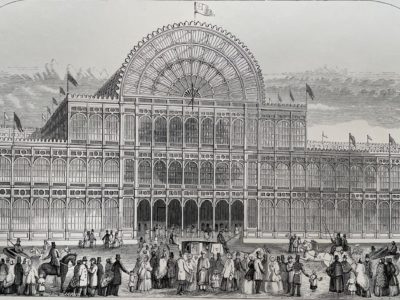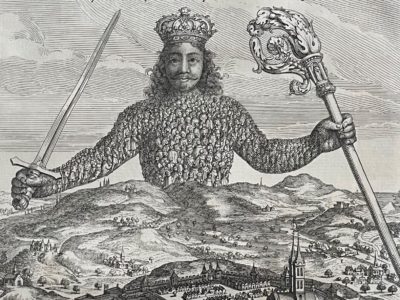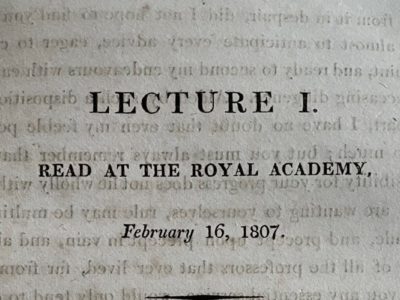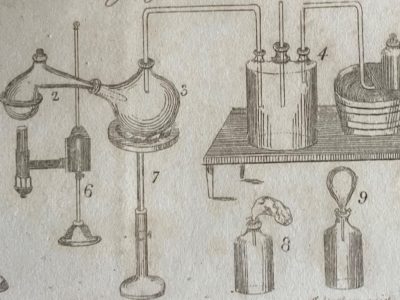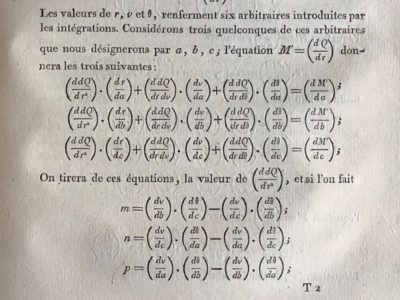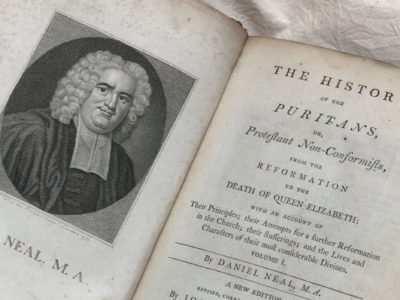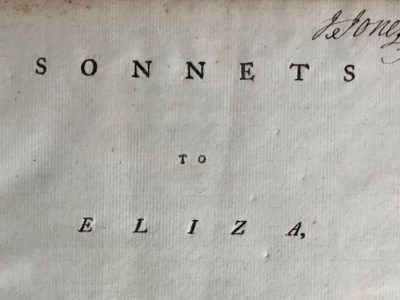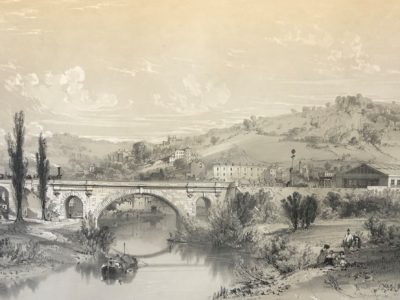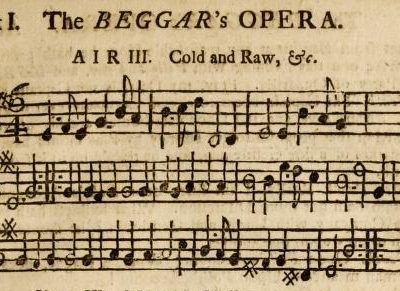Book of the month
Explore highlights from our collections, from the 15th century to the present day.
The Great Exhibition – 170 years on
The Great Exhibition of the Works of Industry of All Nations opened in Hyde Park, London, on 1st May 1851. It was spearheaded by Prince Albert and members of the Royal Society for the Encouragement of Arts, Manufactures and Commerce (later the Royal Society of Arts), including Sir Henry Cole. The Crystal Palace - an incredible cast iron and glass structure, measuring 1848 feet long and 454 feet wide – was constructed in just nine months. The Great Exhibition was to be a ‘wonder of the world’ – a celebration of international industrial design and technology with exhibits from all corners of the earth. But, principally, it was to be a grandstand for Britain and for British manufacturing.
The frontispiece as a ‘threshold of interpretation’: Thomas Hobbes’ Leviathan (1651)
In the 17th century, books began to acquire frontispieces – an illustration, usually a full-page engraved plate, facing the title page. The frontispiece was often an exquisite work of art in its own right - but what was its purpose in the narrative?
A ‘Cornish boy, in tin-mines bred’: the legend of John Opie (1761-1807)
Born in Mithian, St Agnes, Cornwall, John Opie (1761-1807) overcame his humble birth to become a Royal Academician and one of the foremost portraitists and landscape artists of his day. He was introduced to the London art world as a self-taught Rousseauian 'noble savage', raised in a ‘remote and secluded part of the island’, who rose to fame ‘unassisted by partial patronage’. However, little of this was true.
Samuel Parkes’s Chemical Catechism (1806)
While working as a soap manufacturer in Stoke-on-Trent, Samuel Parkes (1761-1825) became fascinated in chemistry. A Chemical Catechism (1806), originally written for his young daughter, became a best-seller across Europe. His method of teaching stressed the importance of observation – but we don't recommend trying his 'amusing experiments' at home!
Richard A. Proctor’s study of the moon
Beth Howell, our Saturday Events Coordinator, has been exploring the Institution's science collection for inspiration for astronomical making activities for our youngest members. Richard A. Proctor (1837-1888) was a lawyer turned astronomer who wrote a series of works on the planets. His investigation of the moon is illustrated with incredible photographs by Lewis Morris Rutherfurd (1816-1892) who also ditched law to study the heavens.
The celestial mechanics of Pierre-Simon Laplace (1749-1827)
As a politician, Pierre Laplace (1749-1827) had an 'incapacity for administration'; as a mathematician he was one of the greatest scientists of all time. His thinking brought him close to the origins of the universe and he was one of the first scientists to suggest the existence of what we now refer to as black holes. This guest blog is written by Edward Maunder following his rediscovery of the first four volumes of Laplace's Traité de mécanique céleste (1798-1805) in our early science collection.
Mayflower: marking 400 years
Daniel Neal (1678-1743), a historian and nonconformist minister, published the first volume of The History of the Puritans in 1732; the final fourth volume appeared in 1738. Neal’s story starts with the Protestant Reformation and concludes with the Act of Toleration in the reign of William and Mary. The second volume includes an account of the voyage of Mayflower to the new ‘Promised Land’.
John Newte (1755-1792) – a Devonian sonneteer
Sonnets to Eliza was published in London by John Murray in 1790. The anonymous work, written ‘by her friend’, is extremely rare. The English Short-Title Catalogue lists only one copy (T207964), held at the National Library of Wales. No contemporary sources offer a clue to its author – but an inscription on the copy at the Devon and Exeter Institution suggests it was written here in Devon.
Lithographs of the Great Western Railway by John Cooke Bourne (1814-1896)
From his home in London, John Cooke Bourne (1814-1896) witnessed the construction of the London and Birmingham Railway, the first main-line railway to enter London. The London and Birmingham Railway Company was founded in 1833 and work soon began on a London terminus. Engineers George and Robert Stephenson chose a site on the edge of the city; a station with two platforms and two hotels was designed by Philip Hardwick (1792–1870) with a huge 70-foot Doric portico marking the gateway to the north. London Euston station officially opened on 20 July 1837. The following year a temporary terminus opened on Bishop’s Bridge Road in Paddington heralding the expansion of the railways to the west.
John Gay’s The Beggar’s Opera
Originally from Barnstaple in Devon, John Gay (1685-1732) became one of London’s most renowned dramatists. His satirical ballad opera, The Beggar’s Opera, opened at Lincoln’s Inn Fields Theatre on 29 January 1728 and ran for 62 nights. Gay’s assault on the topsy-turvy morals, double-standards and self-interests of 18th century politics and aristocratic society remains one of the few 18th century plays still performed today.

